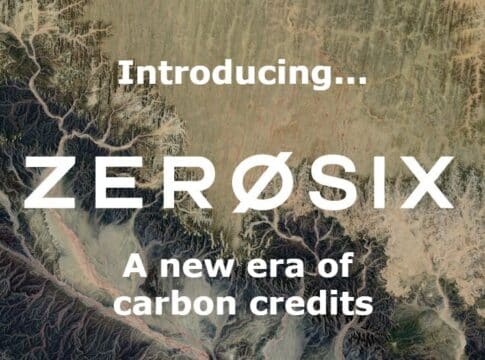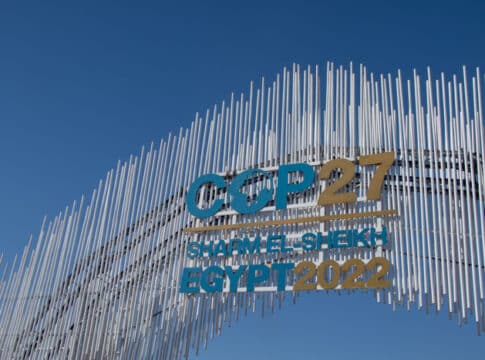Ex-Oil Exec’s form ZeroSix to Turn Oil & Gas Reserves Into Carbon Credits
Veterans from Shell and other oil majors have launched ZeroSix, which plans to tackle 1 gigatonne of carbon emissions from oil & gas wells and generate carbon credits.
ZeroSix offers a digital platform for a new era of high-quality carbon credits addressing accuracy, additionality, permanence, and transparency in the voluntary carbon market (VCM).
The company will convert unextracted, unburned oil and gas into protected carbon credits.
The new greentech venture will create, track, trade, and retire carbon credits on a decentralized digital platform.
This unique approach introduces a revolutionary kind of carbon credit. That’s an upstream carbon offset from fossil fuels that never burn while incentivizing oil and gas producers to shut their wells early.
ZeroSix Carbon Credit Solution
According to Greenpeace, “carbon stored in trees or other ecosystems is not the same as fossil carbon left underground.” And ⅔ of global GHG emissions are from fossil fuels.
So, a team of energy and digital technology professionals from the oil and gas sector and sustainability initiatives, form ZeroSix to provide a solution that keeps fossil fuel reserves in the ground. The founders include Shell and other oil majors veterans.
As per ZeroSix’ CEO, Martijn Dekker:
“We believe the voluntary carbon market can be a critical driver of fossil fuel emissions reductions. But the market must improve in size, quality, and transparency to ensure carbon offsets are actually an effective tool. ZeroSix will contribute to all three areas of growth and improvement as we work to bring the world closer to net-zero.”
In the U.S. there were over 930,000 hydrocarbon-producing wells in 2020. And about 870,000 of them produced less than 100 barrels of oil a day (bottom-quartile).
Those wells with the lowest production contribute only 0.2% of oil and 0.4% of gas. But they account for a disproportionate 11% of annual methane emissions from all U.S. oil and gas production. This translates to 280,000 tonnes of methane per year.
For ZeroSix, that fact offers a huge opportunity for both an economic and a climate win.
The firm states in its analysis that in the U.S., early retirement of bottom-quartile wells can avoid 1 GT CO2e per year. That’s even more than the annual GHG emissions of Germany, the world’s 4th-largest economy.
To address the problem, ZeroSix creates a financial incentive for producers to “mine” their reserves differently. That’s by permanently protecting their wells from extraction via a new zero-carbon fossil fuel value chain.
The company calls it a new era of fossil fuel “prospecting” that leaves fossil fuel reserves unextracted and unburned. And that generates high-integrity carbon credits via ZeroSix platform.
How ZeroSix Platform Works
The new platform offers a robust digital solution to mint, sell, buy, hold, transfer, and retire ZeroSix token-based carbon credits. This solution involves two main users: project owners and token buyers.
Project owners refer to entities that produce the carbon credits. Token buyers are firms, individuals, and other entities looking to offset their emissions.
The solution follows a blockchain-based approach and other decentralized digital technologies. The system uses a ZeroSix token: 1 token = one tonne CO2e.
ZeroSix tokenized system provides a shared, immutable, tamper-proof digital record of events and transactions related to the creation, sale, and retirement of carbon credits.
The token uses the ERC-1155 multi-token standard. That means it includes both non-fungible (information that is unique and specific to a token) and fungible (information that is uniform across all tokens) components. This standard is the same approach adopted for digitalized renewable energy markets.
Following the stringent ZeroSix protocol, fossil fuel wells are shut-in forever. The forfeited reserves convert to carbon credits that can be used in the VCM. This solution fixes the four weak areas that put carbon credits under scrutiny:
Accuracy: ZeroSix carbon credits are based on government regulatory standards (SEC standard) in calculating hydrocarbon reserves emissions for precise measurements and reporting.
Additionality: Keeping oil and gas reserves from proven producing wells in the ground avoids all emissions related to their potential surfacing, processing, and consumption. ZeroSix carbon credits are only issued for those wells which would have otherwise resulted in extracting, refining, and burning of the oil or gas.
Permanence: ZeroSix carbon credits require that the fossil fuel reserves are never extracted, with insurance against event of reversals. The shutting in of oil and gas wells is irreversible.
Transparency: The decentralized, digital platform used by ZeroSix allows anyone to easily verify carbon credits, which are independently verifiable.
ZeroSix’s operating system will launch at the end of 2022 while aiming for a full carbon credit platform launch in 2023.
The company also plans to scale to take on other emissions reduction projects apart from oil and gas. These include other hydrocarbons and CO2 removal technologies such as direct air capture.
The post Ex-Oil Exec’s form ZeroSix to Turn Oil & Gas Reserves Into Carbon Credits appeared first on Carbon Credits.



